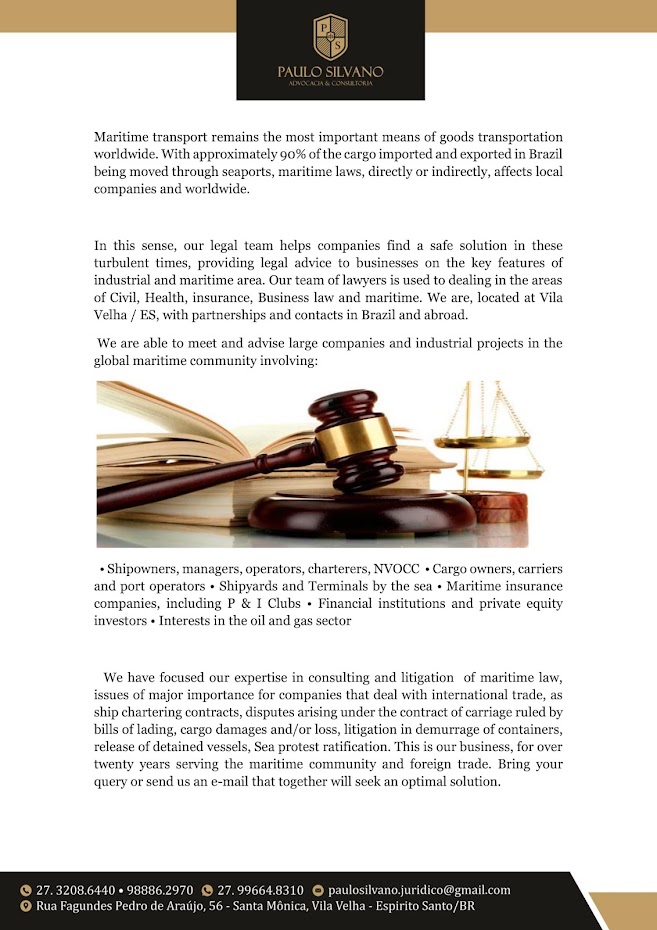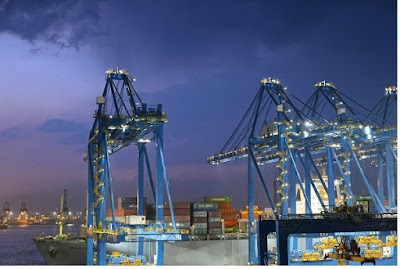CONTAINERS THROUGHPUT IN BRAZIL AND WORLDWIDE
According
to UNCTAD maritime review, edition 2018, the world container throughput reached
a level of 752 millions TEUs in 2017(tweenty equivalent unity). The Asian
continent responding to 63%, Europe 16%, North America 8% and Developing America
with 6% of volumes moved.
Shanghai
ports, achieved the best performance
with an average of 40.2 million TEUs in throughput/moved. The vessels time
staying in port (loading/discharging operations) has enhanced to 31.2 hours in
port, rather than 33.6 the last 2016 year. Bearing in mind that we are talking
about mega containers ships of 15.000 to 18.000 unities for loading and unloading
operations.
Regarding
to the seaborne trade Market, there has been an increase of 6.2 per cent in
2017 with the carrier CMA-CGM heading the list of best revenues reach 32.1
percent, followed by the Maersk carriers with almost 15% revenues and an
enticed EBITDA, mainly after the aquisition of Hamburg Sud and Mercosul Line (
a coastal/ feeder shipowner) in Brazil.
Important
to point out that these throughput and figures improvement has been supported
by the merger and acquisitions and the alliances of the top five main liners
carriers, held in 2017 and responding to 50 per cent of the containers Market
share. Namely: Maersk, MSC(Mediterranean
Shipping and Co), CMA-CGM, China Ocean Shipping Company(COSCO) and Happag
Lloyd.
These
five leading containers companies has consolidated their monopoly in three majors alliances of containers liners
worldwide as follows: 2M, The Ocean Alliance and the Alliance. Therefore, who
is who in this consolidation? Let´s see hereafter:
ü
2M: MSC
and Maersk Line
ü Ocean
Alliance: CMA-CGM, China Ocean Shipping company(COSCO) and Evergreen.
ü The
Alliance: Hapag-Lloyd, Yang Ming and Orient Network Express(ONE)
These three alliances altogether,
canvassed around 93 percent of tradelane east-west route in containers
movements transported.
All figures sourced by UNCTAD site: https://unctad.org/en/PublicationsLibrary/rmt2018_en.pdf
Well, and
how about the Brazil? According to the Antaq (Agencia Nacional de Transportes
Aquaviario) figures depictured in site : http://portal.antaq.gov.br/wp-content/uploads/2017/03/Boletim-Informativo-1%C2%BAT2018_Vers%C3%A3o_-Publica%C3%A7%C3%A3o.pdf.
The best performance achieved by the
Brazilian ports last 2017 year, reached almost 10 million containers moved.
These
figures mean less than 25% per cent of handled in Shanghai port, (40.2 million)
containers throughput same year 2017. Should the Brazil intend to be a
prominent global logistic player, urge to undertake necessary infrastructure
reforms and revise its logistical and ports policy to embrace the new era of
digitalized and autonomous ports, especially in the container Market segment.
We hope
the new President, ministers and lawmakers emerged from the ballot box, may
reinforce the PPP´s (Private Public Partnership) instruments to allow new and
Strong long-term foreign investment,
seizing the opportunity of Chinese boom in Belt & Roads projects
already deployed in China, South Asia and even in Europe. This private capital,
can be achieved by South américa, mainly, the Brazilian ports with
transparency, enviroment care and sustainability.
To learn more about this or others
maritime subjects, please contact our office, we are at your entire disposal.
Author full details:
Paulo Sergio Silvano de Oliveira
lawyer - Consultant
Extension in maritime law (shipping, oil & gas,
loss and averages, etc.)
"Expertise" in ports - having worked for 10
years in VALE ports;
Maritime ships repairs, Ships Agency, Charterers and
Trading companies.
e-mail: paulosilvano.juridico@gmail.com
Linkedin: BR.linkedin.com/in/paulosilvano

